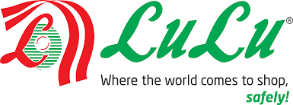
Welcome to Pan Trading Contracting & Services
Get StartedWhat We Do
Pan Trading, Contracting & Services was established in 2015 to become a projects support service company which operating under the Group of Qatar Masters WLL which has 10+ years of experience in trading contracting and has more than 1500 man force deployed in various major projects in Qatar approved by Supreme Committee for Delivery & Legacy. Pan Trading Contracting & Services is certified with ISO 14001:2015, ISO 45001:2018 & ISO 9001:2015. We support the projects from its early stages starting from anti termite treatment for the site, supply of man force when it comes to blue collar workers as well as white collar workers and finally post contraction deep cleaning services which helps our clients at the time of project handover. As a socially responsible organization we are committed to support Qatar National Vision 2030.
About Us
Delivering trusted project support solutions with certified quality, skilled manpower, and a commitment to Qatar’s growth.

Pan Trading, Contracting & Services, established in 2015 under Qatar Masters WLL, is an ISO-certified project support company with 14+ years of expertise and over 1,500 manpower deployed in Qatar’s major projects. We provide end-to-end support, including anti-termite treatment, skilled and unskilled manpower supply, and post-construction deep cleaning. As a socially responsible organization, we are committed to Qatar National Vision 2030.
-
Our Mission
It is our mission to provide the highest quality service of unmatched value to our clients through the efforts of a highly dedicated, trained, and productive workforce who share a commitment to long-term growth and success.
-
Our Vission
With big ambitions, we are part of this great nation’s vision for the year 2030. Making sure we have the right people for the right job and the right attitude. As a socially responsible organization, we are committed to support Qatar National Vision 2030
-
Our Values
To be a company of caring professional people, delivering the best class of services for long-term growth and success.
Clients
Projects
Years Of Experience
Services
Comprehensive project support services
Manpower Supply
We provide qualified professionals, as well as skilled and unskilled labor, to meet your project needs on short, medium, or long-term engagements. Our workforce is carefully assessed to ensure the right skills are matched with your requirements, helping you maintain smooth and efficient operations. With our technical manpower supply, you can rely on quick mobilization, dependable service, and a trusted partner who understands the importance of timely execution. By choosing us, you gain a workforce solution that supports productivity and ensures projects are completed within planned timelines.
Cleaning Services
Pan Trading Contracting & Services is a trusted provider of hard and soft facility services in Qatar. With over 7 years of experience, we have built a reputation for quality workmanship, professionalism, and customer-first service. We cater to diverse industries including offices, restaurants, hotels, retail spaces, and post-construction sites. Our focus on personalization ensures every project is delivered to meet your exact needs, backed by integrity, transparency, and fair pricing. Our cleaning services include: Janitorial Services | Window Cleaning | Carpet & Upholstery Cleaning | Pressure & Steam Cleaning | Construction Site Clean-up
Pest Management Services
We deliver professional pest control solutions for both residential and commercial properties. Our trained experts handle infestations of bed bugs, cockroaches, rats, lizards, birds, and more, ensuring effective treatment both indoors and outdoors. Pests not only disrupt daily life but also pose serious health risks. That’s why we focus on prevention and long-term solutions, supported by quick response times and ethical, customer-first practices. With us, you can enjoy a safe, pest-free environment backed by professionalism, transparency, and lasting results.
Anti Termite Treatment
Termites, while beneficial to the ecosystem, can cause severe damage to human-made structures such as buildings, cables, and untreated timber. To prevent costly repairs, anti-termite treatment is essential—especially during the pre-construction phase. At Pan Trading Contracting & Services, we use premium chemicals to create a protective soil barrier that stops termites from infiltrating the structure. This treatment not only prevents infestations but also eliminates termite colonies by transferring the chemical through foraging termites. By choosing our pre-construction anti-termite solutions, you safeguard your property from long-term structural damage while ensuring lasting peace of mind.
Our Clients
Proudly serving leading organizations across Qatar with trusted project support solutions.
Contact
Get in touch with us today – we’re here to support your project every step of the way.
Address
2nd Floor, Remal Royal Center,Umm Ghuwalina, Doha-Qatar,P.O Box: 32063.
Call Us
(+974) 4464 7378, (+974) 3111 7217
Email Us
sales@pan-qa.com



















